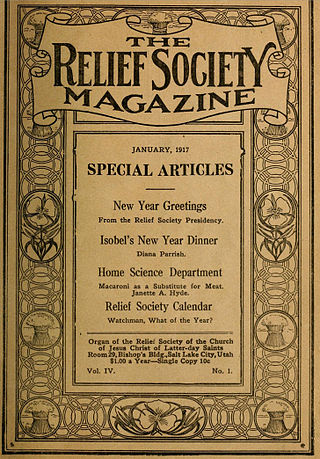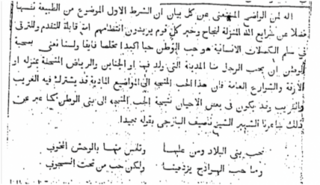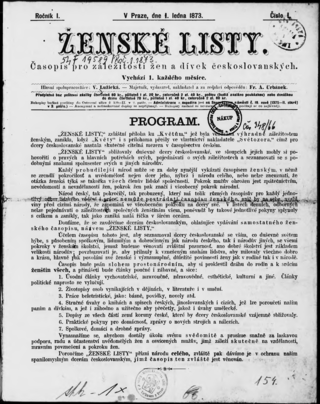Related Research Articles
This is a complete list of works by H. P. Lovecraft. Dates for the fiction, collaborations and juvenilia are in the format: composition date / first publication date, taken from An H. P. Lovecraft Encyclopedia by S. T. Joshi and D. E. Schultz, Hippocampus Press, New York, 2001. For other sections, dates are the time of composition, not publication. Many of these works can be found on Wikisource.

Relief Society Magazine was the official publication of the Relief Society of the Church of Jesus Christ of Latter-day Saints from 1915 to 1970. It succeeded the earlier and privately owned Woman's Exponent, which was begun in 1872. The magazine was an important publishing outlet for Utah women, and was run by women editors. The founding editor, Susa Young Gates, edited the magazine from 1915 to 1922. The December 1970 issue of the Relief Society Magazine was its last. The LDS Church discontinued the magazine as part of the implementation of the Priesthood Correlation Program. Thus, the magazine and several others within the church were replaced by the Ensign.
Uusi Suomi was a Finnish daily newspaper that was published from 1919 to 1991. The headquarters was in Helsinki, Finland.

William Desmond was an American actor. He appeared in more than 200 films between 1915 and 1948. He was nicknamed "The King of the Silent Serials."
San Diego Magazine is a multi-platform media company covering food, arts and culture, travel, health and wellness, social progress, and life in San Diego County. Its flagship monthly magazine has won multiple regional and national awards. The media company also produces podcasts, large-scale events, custom publications, e-newsletters, and short- and long-form video. It is a member of the City and Regional Magazine Association (CRMA).
The Criterion was a British literary magazine published from October 1922 to January 1939. The Criterion was, for most of its run, a quarterly journal, although for a period in 1927–28 it was published monthly. It was created by the poet, dramatist, and literary critic T. S. Eliot who served as its editor for its entire run.
During the nine decades since its establishment in 1919, the Communist Party USA produced or inspired a vast array of newspapers and magazines in at least 25 different languages. This list of the Non-English press of the Communist Party USA provides basic information on each title, along with links to pages dealing with specific publications in greater depth.

Linda Claire Steiner is a professor at Philip Merrill College of Journalism, University of Maryland. She is also the editor-in-chief of the journal Journalism & Communication Monographs, and sits on the editorial board of Critical Studies in Media Communication.
Ínsula is a magazine which features articles on literary work and literary criticism. Its subtitle is Revista de Letras y Ciencias Humanas. It is based in Madrid, Spain. In terms of format and contents the magazine is similar to the New York Review of Books, and its title is a reference to Spain's isolated status during the post-war period. Eleanor Wright describes Ínsula as one of the most respected independent literary magazines in the post-war period Spain.
Thamarāt al Funūn was a Lebanese biweekly that was published between 1875 and 1908 in Beirut. It was one of the significant publications and the sole media outlet of the Lebanese Muslims during that period. It circulated regionally as part of the rising Arabic-language press of the mid-19th century.
Zhenskii vestnik was a Russian language monthly feminist magazine which was published in Saint Petersburg in the period 1904–1917. Its subtitle was Soiuz zhenshchin, Jus suffragii. The magazine billed itself as monthly social scientific and literary journal on equality and advancement of women.
Revista de Occidente is a cultural magazine which has been in circulation since 1923 with some interruptions. It is based in Madrid, Spain, and is known for its founder, José Ortega y Gasset, a Spanish philosopher.
Diken was a weekly satirical magazine which was published in the period 1918–1920 in Istanbul, Ottoman Empire. It was one of the publications which were founded by Sedat Simavi, a well-known Turkish journalist. The magazine was one of the first Ottoman satirical publications which featured color cartoons.

Hadiqat al-Akhbar was a weekly newspaper which was published in Beirut in the period 1858–1911 with a two-year interruption. Its subtitle was Ṣaḥīfat Sūriyya wa-Lubnān. The paper was the first private daily in Beirut, the first Arabic newspaper which had a regular literary section and the first weekly Arabic newspaper in the region.
Emma Miller Bolenius was an American educator and textbook writer.

Ženské listy is one of the early women's magazines published in Prague between 1873 and 1926. It provided a synthesis of feminism and nationalism.

La Ronda was a literary magazine which existed in Rome, Kingdom of Italy, between April 1919 and November 1922. In December 1923 a special issue was also published.
Zwrotnica was an avant-garde magazine which was one of the significant publications in Poland. It appeared in Kraków in two periods: first between 1922 and 1923, and then between 1926 and 1927. Despite its short run, it is the first Polish avant-garde magazine that had an international audience.
Menorah was a monthly Jewish illustrated magazine which appeared in Vienna, Austria, between 1923 and 1932. It was published in German. The subtitle of the magazine was jüdisches Familienblatt für Wissenschaft, Kunst und Literatur.
References
- 1 2 3 4 5 Tom Lutz (2005). "The Cosmopolitan Midland". American Periodicals. 15 (1): 74–85. doi:10.1353/amp.2005.0009. JSTOR 20771172. S2CID 143978661.
- 1 2 3 4 5 "The Midland". Modernist Magazines. June 14, 2016. Retrieved July 2, 2022.
- 1 2 Miglena Sternadori; Susan Currie Sivek (2020). "City and Regional Magazines: Consumer Guides or Social Binders?". In Miglena Sternadori; Tim Holmes (eds.). The Handbook of Magazine Studies. Hoboken, NJ: Wiley-Blackwell. p. 311. doi:10.1002/9781119168102.ch23. ISBN 9781119168102. S2CID 213157470.
- 1 2 3 4 "The Midland. [A magazine of the Middle West]". Stanford University Libraries . Retrieved July 2, 2022.
- ↑ Joy Jenkins (2019). "Magazine Journalism". In Tim P. Vos; Folker Hanusch (eds.). The International Encyclopedia of Journalism Studies. Wiley-Blackwell. pp. 4–5. doi:10.1002/9781118841570.iejs0190. ISBN 9781118841570. S2CID 240908620.